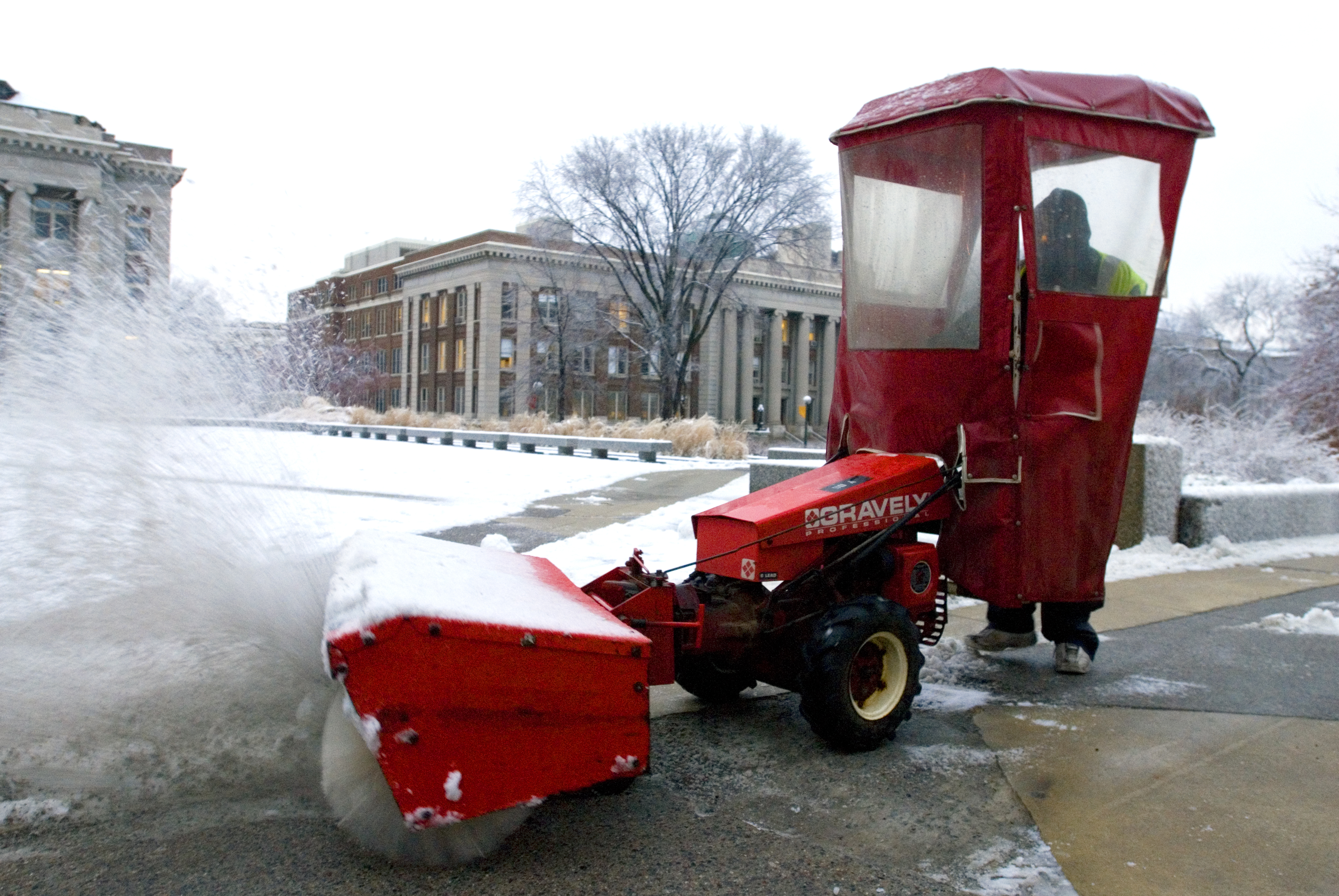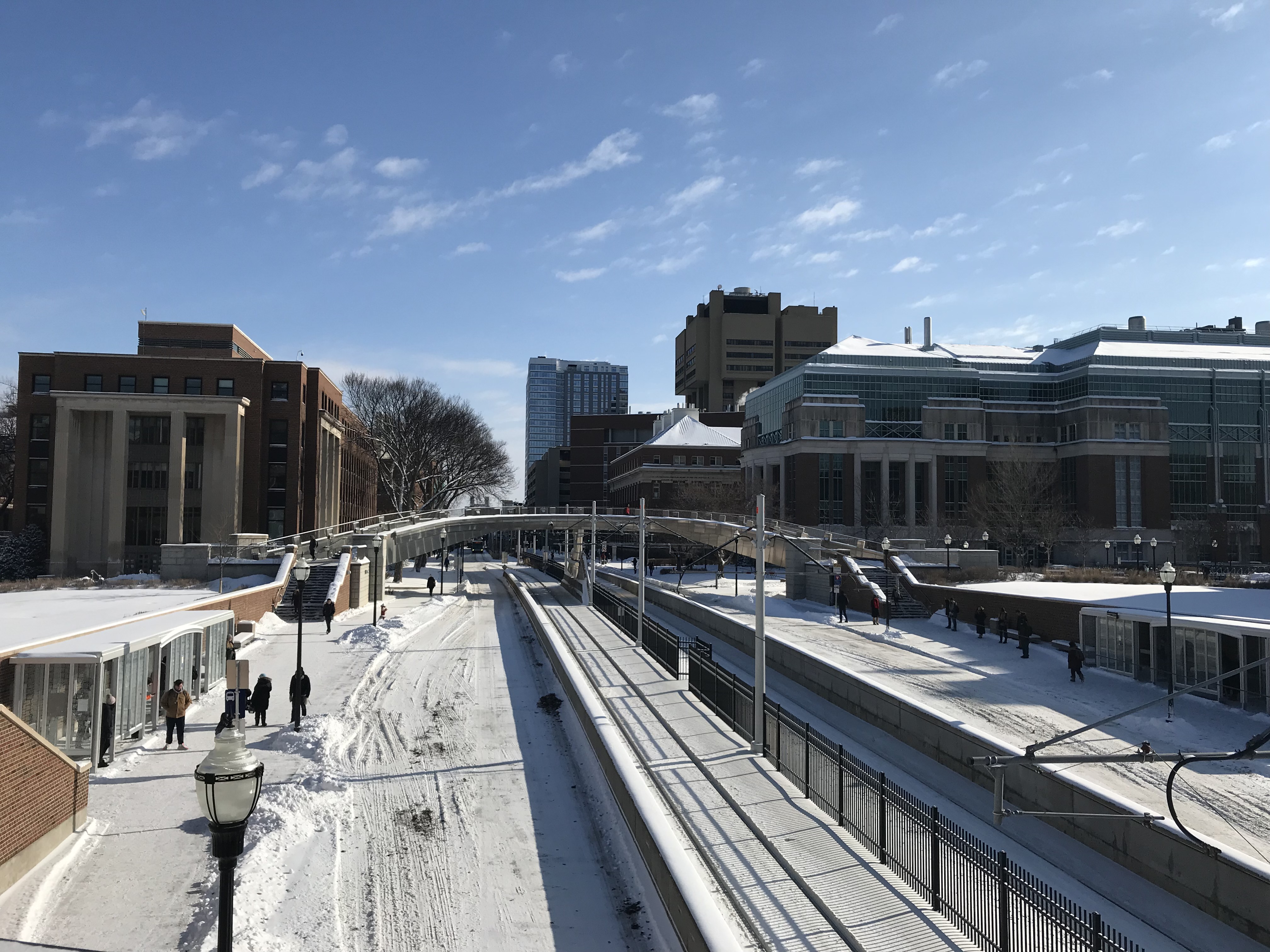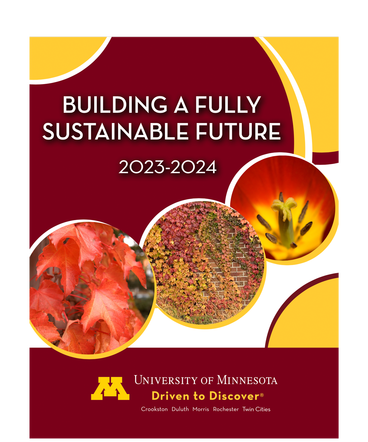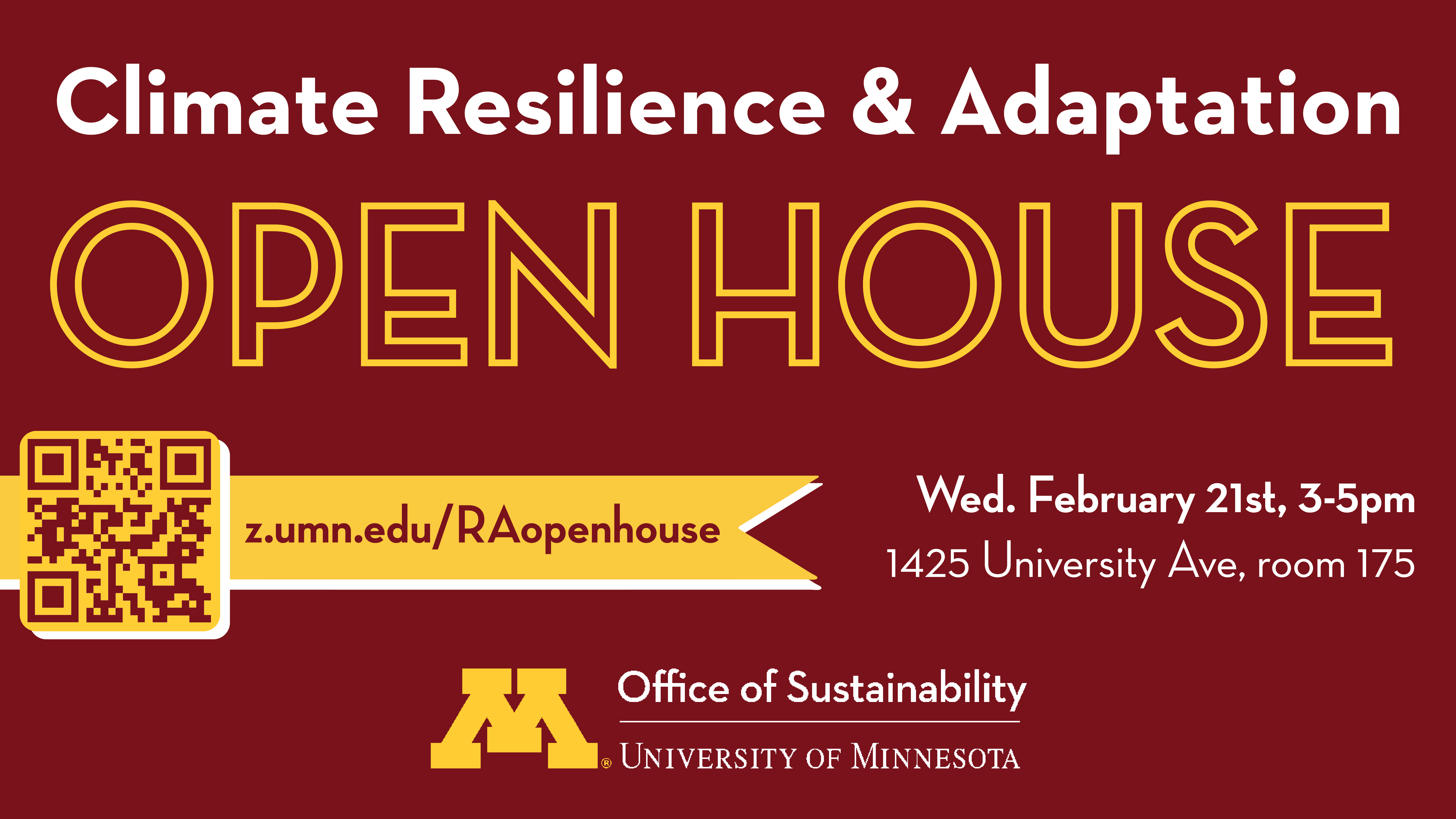
University of Minnesota Winter Salt Use
Facilities Management’s Landcare team is the primary snow removal service provider for the University of Minnesota Twin Cities campus, responsible for clearing nearly 100 miles of streets and walkways, and over 100 acres of parking surfaces. The Landcare team added an anti-icing agent to the University’s winter maintenance program back in 2006. This led to cost savings and reduced environmental impact. The Landcare team completes Smart Salting training through the Minnesota Pollution Control Agency, and in all operations, the Landcare team works hard to balance the importance of public safety with thoughtful stewardship of natural and constructed resources on our beautiful campus.
“There is pressure to apply more salt for the social and safety aspects of icy roads and sidewalks. But there are also the ecological impacts and the pressure to limit salt use, along with the degradation of campus infrastructure that comes with too much salt use ” - Tom Ritzer, Assistant Director of Landcare.
Process
The Landcare team monitors the weather conditions to make a plan of attack, using data from NOAA and University weather response notifications. This gives Landcare a better understanding and context to the weather. They coordinate all possible predicted weather conditions, events on campus, and staff availability to ensure they are prepared for the weather conditions. Before a forecasted snowfall, Landcare sprays salt brine anti-icing agent on roads and sidewalks. They pre-wet this treatment, by adding water to the salt, to enhance the effectiveness of the treatment. Pre-wetting speeds up the time it takes for the salt to work, salt needs to be wet to bind to reduce ice, and is more effective, allowing them to use less. This brine solution prevents ice layers from forming and bonding with the surface of the roads and sidewalks, making removal of accumulated snow easier and more efficient, and reducing the need for additional salt applications. The use of anti-icing solutions allows the University to cut salt and sand use by several hundred tons per year, thus saving thousands of dollars, improving air quality, decreasing silt build-up, and reducing harmful runoff to stormwater systems and receiving water bodies.
Intermittently before applying treatment, the Landcare staff calibrate their equipment to accurately apply and reduce the amount of salt needed. Most of their work is being proactive to prepare for snow or freezing weather events.
Watch this video to see the process!
If you see white lines on roads or sidewalks on campus, you know that the surface has likely been pretreated by Landcare. The lines give a wider range of concentration for the anti-icing to be as effective as possible. As always, be sure to practice safe winter habits, Gophers!

Comparisons
Salt brine is different from road salt that we typically use and think of. Salt brine is a solution of sodium chloride and water that is very useful in reducing the adhesion of snow and ice to road surfaces. It has a freezing point below water so it can stop snow from freezing to the pavement surfaces. It is an anti-icing, proactive approach that decreases the amount of snow and ice that sticks to a pavement surface in the first place. Anti-icing involves placing a layer of bring on the surface of pavements before a storm has hit to prevent ice from freezing to roads. Road salt on the other hand, is crystals of sodium chloride and does not stop/prevent snow from freezing to pavements. Road salt is a deicing, reactive approach that retroactively works to remove snow and ice from pavements. Deicing uses road salt to break up snow and ice after it has frozen to the road. Therefore, the Landcare team using a salt bring anti-icing approach is more proactive and efficient.
Environmental Impacts
With the many benefits that salting provides, there are harmful environmental impacts to consider. Salt can have adverse effects on nearby environments and groundwater sources. (MNDOT) most of the salt placed on roads, parking lots, and driveways ends up as water runoff.
“A University of Minnesota study found that 78% of the salt placed on roads stays in the MSP area, entering lakes and streams, or flowing into our soils and eventually the groundwater. The chloride makes the water taste salty, and ruins habitats for freshwater aquatic species, such as fish and clams.” (UMN) This is because chloride in high amounts affects the oxygen levels and natural mixing of lakes and waterways, which not only ruins habitats but is toxic to aquatic life.
Road salt can contaminate drinking water, kill or endanger wildlife, increase soil erosion, and damage private and public property. Sodium chloride (table salt) is the most common substance used for deicing roads and sidewalks. The salt can infiltrate nearby surface and ground waters, contaminating drinking water reservoirs and wells. High sodium levels in water affects people with high blood pressures when found in drinking water. It can be toxic to fish, bugs, and amphibians when found in surface waters. Salt can accumulate on roadside areas harming roadside plants and wildlife that eat the salt. (EPA)
To reduce these environmental impacts, Smart Salting training helps reduce chloride pollution by reducing salt use from 30-70%! All while keeping roads, parking lots, and sidewalks safe. This training has been shown to prevent chloride contamination in water bodies. The Landcare team has also evolved their practices over time to be more efficient in their application of salt, reduce costs, and reduce impacts on the environment.
“Over the last 15 years, we have evolved to be more sustainable in the use of chlorides in our anti-icing program, we utilize the MPCA Smart Salting Program, reduce the use of sand which has other environmental impacts on stormwater, and have researched deicing products to find the most effective chemical blends to use less altogether.”- Tom Ritzer
How Much Salt is Needed?
If needed, apply deicing salts correctly and sparingly. One teaspoon of salt will pollute 5 gallons of water! Read the product label and apply as directed, included at the proper temperature. Only about 12 oz is needed for 1000 square feet, approximately the area of a 20 foot driveway or 10 sidewalk squares! Remove snow first before applying deicers. Spread salt evenly, leaving 3 inches between salt grain and avoid spilling piles of salt. Sweep up all salt grains on dry surfaces to prevent it from washing into storm drains or waterways. (UMN Extension)
What can YOU do?
Know that more is NOT better! Deicing salts are LESS effective when applied in excess. Shovel, scrape, and sweep snow often to remove as much of it and prevent ice buildup. If it’s a warmer day, let any remaining snow or ice layers melt. Be like the University of Minnesota and reduce your deicing salt use when possible!
Salt is one type of illicit discharge. Illicit discharge is defined as "any discharge to an MS4 that is not composed entirely of stormwater" ... "with some exceptions." (EPA). Examples include the dumping of motor vehicle fluids, household hazardous waste, paint, grass clippings, leaf litter, cigarettes, or animal waste. Illicit discharges are considered 'illicit' because "MS4s are not designed to accept, process, or discharge such non-stormwater wastes." If any of these end up in the street they will reach a storm drain and enter into a water body. In daily life and around campus, you can help by picking up trash and pet waste and avoid use of pollutants like ice melt or salt. If you observe an illicit discharge on campus, please report those findings to the University Health & Safety On-Call Program: [email protected] or 612-626-6004 (24-hr Line)
Click to see the EPA's list of illicit discharges Learn more about illicit discharge.



